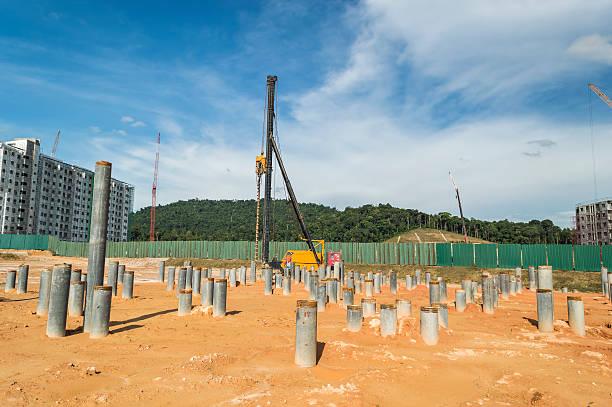Introduction to Urban Construction Challenges
Urban construction projects face unique challenges that are not always present in suburban or rural builds. One of the most pressing concerns is the impact of noise and vibration on surrounding communities and existing infrastructure. Traditional piling methods can generate significant disturbance, making them less suitable for congested city environments. Mini piling, however, offers a practical alternative that minimizes disruption while maintaining structural strength.
Why Noise and Vibration Control Matters
In densely populated areas, excessive noise can affect residents’ quality of life and even violate local regulations. Vibrations, on the other hand, can damage nearby buildings, underground utilities, or delicate historical structures. Reducing these factors is not just about convenience—it is about safety, compliance, and community trust. For this reason, contractors and developers are increasingly looking for methods that balance efficiency with minimal environmental impact.
How Mini Piling Works in Confined Spaces
Mini piling involves using smaller rigs and installing slender piles that can carry significant loads despite their reduced diameter. Because the equipment is compact, it can operate in confined sites with limited access. The reduced need for heavy machinery directly translates into less ground disturbance, which is one of the reasons mini piling is favored in busy urban construction zones.
Noise Reduction in Mini Piling Operations
One of the advantages of mini piling is its relatively quiet operation compared to traditional driven piles. Instead of heavy hammering, mini piles are usually drilled or screwed into the ground. This method significantly lowers noise levels, making it possible to work in residential areas without causing major disturbances. The quieter process also means construction schedules can progress more smoothly without extended complaints or delays from surrounding communities.
Minimizing Vibration Risks
Unlike conventional driven piling, which transmits strong vibrations through the ground, mini piling techniques produce minimal ground movement. This is particularly important when working near older or fragile buildings where even small vibrations could lead to cracks or long-term structural damage. By adopting vibration-friendly piling methods, developers reduce liability risks while ensuring safe working conditions for both workers and nearby residents.
Case for Safer Urban Development
The use of mini piling in cities is part of a broader push toward safer, more sustainable construction practices. By reducing noise and vibration, developers can avoid costly disputes, maintain community goodwill, and comply with strict urban building codes. This approach creates a win-win situation faster project approvals for developers and greater comfort for local communities.
Combining Mini Piling with Advanced Engineering
Modern construction does not rely solely on machinery it also benefits from engineering innovation. Careful planning of pile depth and spacing ensures that mini piles can handle substantial loads without overstressing the soil. For complex ground conditions, developers may also consider concrete piling foundations for varied soil conditions to combine strength with minimal disturbance. This integrated approach ensures that urban projects achieve both durability and reduced impact.
Environmental and Regulatory Benefits
Noise and vibration control are also linked to environmental responsibility. Lower noise reduces disturbance to urban wildlife, while reduced vibrations protect underground water systems and transport infrastructure. At the same time, many local councils now enforce strict limits on construction-related disruptions. Mini piling helps contractors stay compliant with these regulations, avoiding fines and ensuring smoother project execution.
Long-Term Value of Mini Piling in Urban Projects
While mini piling is often chosen for its ability to reduce noise and vibration, it also provides long-term value. Structures built on mini piles benefit from stable foundations that resist settlement, even in challenging soil conditions. For developers, this translates into fewer maintenance issues, stronger resale value, and increased trust from clients who prioritize both performance and responsibility.
Conclusion
Urban construction demands solutions that prioritize safety, community well-being, and compliance with environmental standards. Mini piling meets these requirements by reducing noise levels and minimizing ground vibrations, making it the ideal foundation method for city projects. By integrating advanced engineering with sustainable practices, contractors ensure that developments are not only structurally sound but also respectful of the people and environments around them.



